
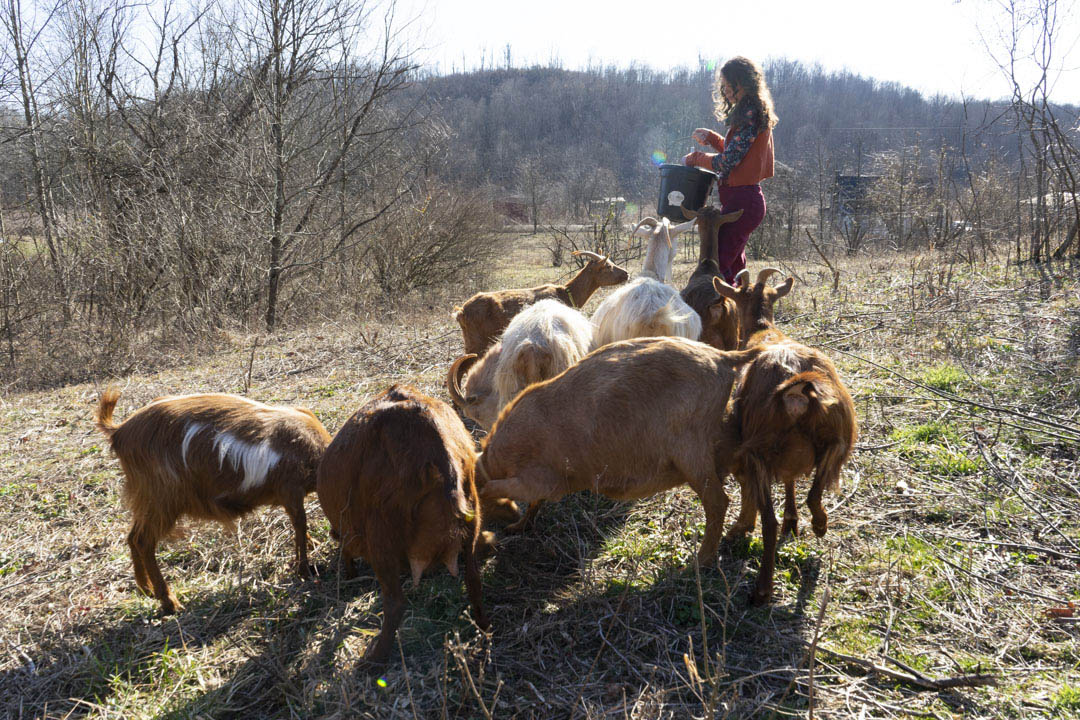
Sasha Sigetic runs the goat herd at Black Locust Collective up to the pasture to feed them and let them forage. Photograph: Molly Roberts
Like many 21st century beginnings, Ross Martin, Kurt Belser and Sasha Sigetic met online. Twenty people on an internet listserv originally discussed the possibility of starting a community based on anarchy and racial justice. In its earliest stage, the community was dubbed the Anarchists Permaculture Utopia. By the time the group finally took steps to make this idea a reality, these three friends were the only remaining members willing to put shovels into the ground.
It took 12 years for the members of Black Locust Collective to turn their vision into a working permaculture farm on a recently purchased 104-acre tract of land in Meigs County near Albany, Ohio.
Sasha explains, “At the heart of it is the utopian hope that humans can live together and want to love each other enough to keep each other alive, without someone in charge, telling us how we should do that.”
"We want people to be kinder to each other and to stop perpetuating inherited traumas,
like racism, on each other."
- Badger Johnson
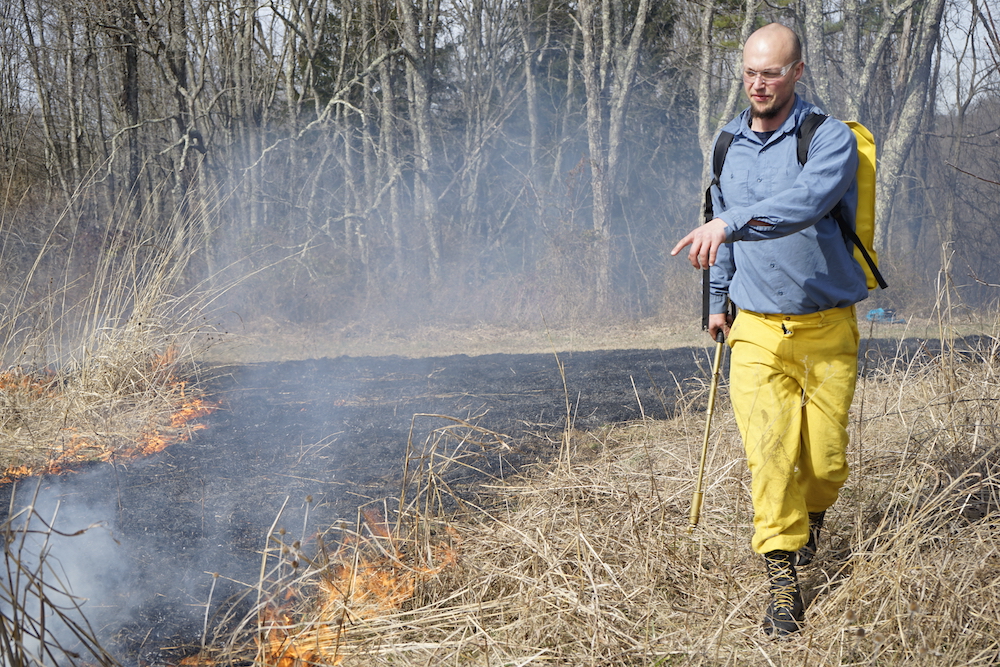
Badger Johnson, of Black Locust Collective, demonstrates a controlled burn at the Woodcock Nature Preserve in Athens Ohio. Photograph: Molly Roberts
Charlene Suggs, a contracts expert from the Wisteria community group, is helping them draw up their land agreement. Charlene points out that of 100 communities that intend to form, the majority of them will fail. Part of being intentional about forming a community involves creating agreements about how land ownership will be managed, what the guiding principle of a community will be, and how decisions will be made. These legal agreements are insurance that whatever challenges the community faces in the future, they have the means and principles to solve them.
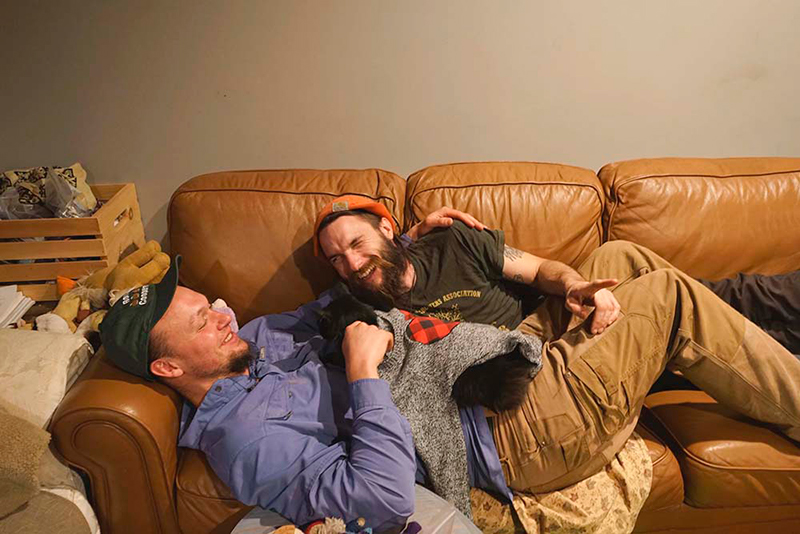
Badger Johnson and Kurt Belser hang out on the sofa together at Black Locust Collective after a Sunday night community dinner. Peggy the cat enjoys their attention. Photograph: Molly Roberts
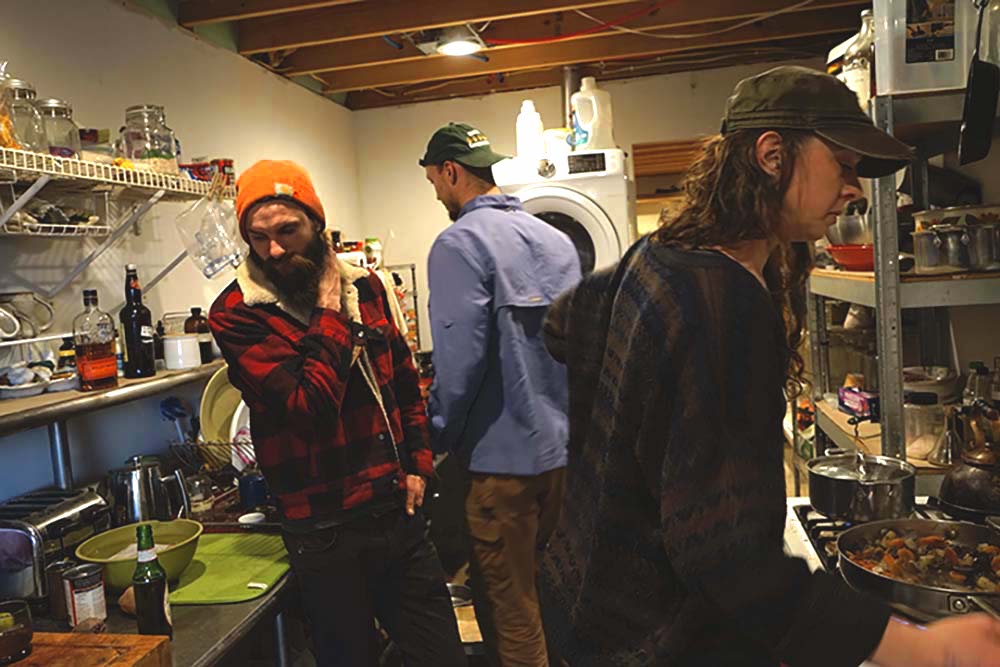
Kurt Belser (left), Badger Johnson (middle), and Sasha Sigetic (right) prepare a meal in their kitchen. Photograph: Molly Roberts
Listen to Badger Johnson's thoughts on anarchy, which is the organizing principle of Black Locust Collective.
Besides anarchy, permaculture and goat farming are the top priorities of Black Locust Collective’s future. Badger Johnson, a new member, is a proponent of controlled burns on farmland. Controlled burns were a part of the First Nation people’s process to deal with invasive species, like multi-flora rose and Japanese honeysuckle, both of which are fierce competitors with native grasses. He has introduced neighboring farms and nature preserves to the usefulness of fire in preparing and renewing land.
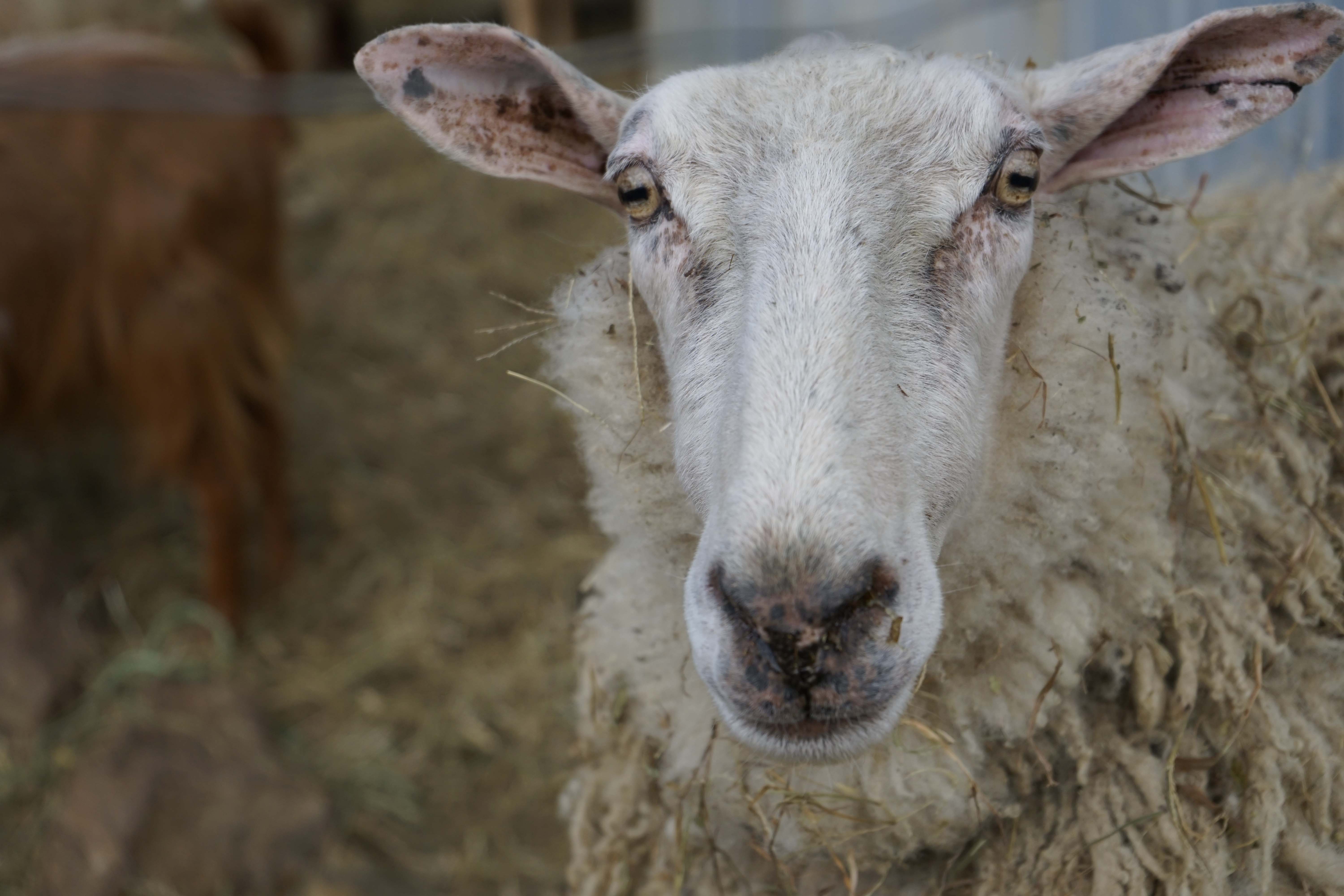
A sheep, named Big Sheep, keeps the goats company in the pen at Black Locust Collective. Photograph by: Molly Roberts

Sasha Sigetic is raising goats for both milk and meat for the community. Photograph by: Molly Roberts
Sasha’s goat herd has doubled in the last year. She raises the rare heritage British Guernsey for milk and has also crossbred a Savannah buck with the Guernsey mama for her meat herd. The hilly property, covered with brambles and grass, is perfect “goat food.” Three baby goats have been born this season so far. She intends to use the goats for milk and food, and as a source of income. Sasha also teaches permaculture at Hocking College.

Sasha Sigetic and her daughter, Mirna (9), hang out on the front porch at Black Locust Collective. “She’s connected to the land,” Sasha says of Mirna, “I think this place is definitely a part of her.” Photograph: Molly Roberts
The other young’un on the farm is nine-year-old Mirna, who attends a public school called Meigs Intermediate. She also pitches in to help Sasha take care of the goats and the Great Pyrenees who guards everyone who lives at Black Locust Collective. When Sasha envisions the future of Black Locust Collective, she sees an Eden of sorts, “a garden of food, animals and people.”
The Collective wants to expand its rural space for like-minded people, especially to other millennials. Badger describes his generation as generally having fewer financial resources and being more mobile than previous generations. “Like-minded” means being politically active, adhering to non-hierarchical interpersonal relations, and having an interest and knowledge in sustainable farming.
“The anarchy part,” says Kurt, “means that we are accepting of all races, genders, and sexual orientations and that we are willing to go to bat and defend those folks in our community and the greater society, if necessary.”
Badger adds “When the Klu Klux Klan came to Dayton last year, at the invitation of the Black Panthers, we (the John Brown Gun Club) marched with them, to send a message to the Klan and the white police force. We want people to be kinder to each other and to stop perpetuating inherited traumas, like racism, on each other.”
Black Locust Collective is in the beginning stages of development and illustrates how intentional communities can begin. To understand how established intentional communities continue on from generation to generation, explore Currents— an intentional community in the midst of a generational transition of power.
Explore Currents